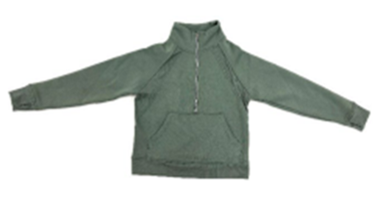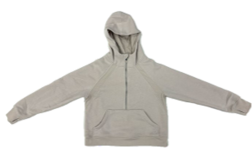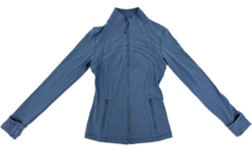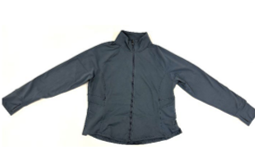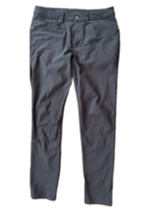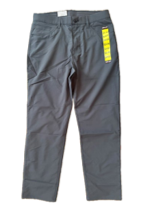Take a walk down Fifth Avenue or Canal Street in New York City, and you are sure to stumble into people selling some type of knockoff version of clothing, belts, shoes, and handbags. These items can be either counterfeits or “dupes.”
A counterfeit product is a direct copy of a product’s trademarked name and/or logo, making it an often-obvious violation of intellectual property (IP) rights. Meanwhile, a dupe is often a replica of a product, with a highly similar physical style, but does not necessarily claim to be the original branded product, nor does it necessarily reproduce the original product’s trademarks.[1]
There is a wide range of “dupes” out there, which vary in similarity to the real thing in appearance, price, and the channels of commerce. Around 31% of US adults have reported that they intentionally purchased a dupe of a luxury product, and the number rises with the younger generation—50% of millennials and 46% of Gen Z adults have reported buying dupes. This may explain why last year, Gen Z shoppers spent around $5 billion less on luxury brands than they did in 2023.
Potential legal issues: The IP risks of dupe culture
The rise of dupe culture presents a host of legal questions. A 2021 report from the EU IP Office called the global trade in fakes a “significant and growing threat,” with handbags frequently one of the most targeted products for counterfeiters. Trained professionals such as sales assistants for luxury brands can even have trouble telling dupes apart. TheRealReal, which resells clothing and accessories, recently invested in XRF technology to test the metal composition of buckles on handbags to help identify dupes.
Dupes often raise trademark infringement issues. The more realistic these dupes become, the stronger the potential likelihood of confusion between a dupe product and the product that it is intended to copy. Dupes can give rise to claims for trademark infringement, trademark dilution, trade dress infringement, unfair competition, and counterfeiting.
Cases to watch: lululemon’s Lawsuit against Costco
Addressing dupes can be challenging for trademark holders and brand owners. While most trademark infringement claims are focused on infringement of registered word marks and designs, suits that address sales of dupes tend to focus instead on unfair competition, trade dress, and design patent infringement—key components of IP protection. In these matters, the infringers are likely not copying the brand name or logo but are instead allegedly copying the distinctive design elements of apparel or products.
For example, on June 27, 2025, lululemon filed a suit for trademark and trade dress infringement, among other claims, against Costco for selling dupes of its clothing designs in the Central District of California, lululemon athletica Canada inc. et al. v. Costco Wholesale Corporation. lululemon accuses Costco of selling dupes of its signature activewear designs, including its SCUBA® hoodies and sweatshirts, DEFINE® jackets, and ABC pants, which Costco sells under its private-label line Kirkland, as well as third-party brands including Danskin, Jockey, Spyder, and Hi-Tec.
In its complaint, lululemon claims that Costco’s products are “confusingly similar” to lululemon’s products, and intentionally duplicate its trade dress, design patents, and trademarks. lululemon alleges consumer confusion and lost profits, along with false designation of origin and unfair competition—all of which are core concerns in IP enforcement. Costco’s versions reportedly retail at around $20, compared to lululemon’s price range of over $100. lululemon seeks an injunction, monetary damages, and a jury trial. On July 22, Costco’s response to the Complaint was due, but the Court granted Costco’s motion to extend time to answer the complaint to August 21.
As depicted in lululemon’s Complaint, below are images of lululemon’s products alongside Costco’s allegedly infringing products:
| Lululemon SCUBA® Product | Danskin Half-Zip Pullover Front |
|
|
|
| Lululemon SCUBA® Product | Danskin Half-Zip Hoodie Front |
|
|
|
| Lululemon DEFINE® Jacket Front | Jockey Ladies Yoga Jacket Front |
|
|
|
| Lululemon ABC Pant Front | Kirkland 5 Pocket Pant Front |
|
|
|
| Lululemon ABC Pant Back | Kirkland 5 Pocket Pant Back |
|
|
|
Image Credit: lululemon, Canada inc. et al v. Costco Wholesale Corporation, No. 2:25-cv-05864, Dkt. 1 (C.D. Cal., June 27, 2025) (July 18, 2025).
Walmart’s “Wirkin” bag and the Birkin lookalike controversy
Athleisure wear is not the only category facing IP challenges from dupes. Earlier this year, Walmart debuted a bag, which appeared highly similar in design to the “Birkin bag,” which is an iconic leather handbag sold by luxury brand Hermès. A genuine Hermès Birkin bag can only be purchased via private invite and can sell for more than six figures. In fact, on July 10, the original Birkin handbag used by Jane Birkin herself was sold at auction for $10.1 million, the highest amount ever paid for a handbag sold at auction to date.
The Walmart bag, dubbed the “Wirkin,” shared many similar trade dress features as the Birkin bag—including similar handles, a similar style of buckle on the front, and a similar shape as the Birkin. The “Wirkin” sold for about $80 at Walmart. The Wirkin was made by Kamugo and listed on Walmart’s website as the “KAMUGO Genuine Leather Handbags Purse for Women.” The “Wirkin” bag page did not display the word “Birkin,” except in some online customer reviews, although the Canadian Walmart website directly called it a “Birkin-style bag.”
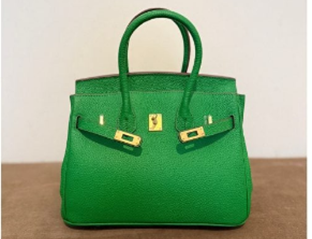 |
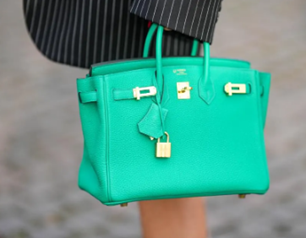 |
| Walmart’s “Wirkin” Bag Image credit: Jennifer Berry, “I Took the Wirkin For a Test Drive, and the Results Were Surprising,” THE KIT (July 18, 2025, 1:44 pm). |
Hermès Birkin Bag Image credit: Edward Berthelot/Getty Images, “Does Walmart ‘Wirkin’ Bag Threaten Hermès So That It Must Protect Its Birkin Trademark?” FORBES (July 18, 2025, 1:45 pm). |
Although Hermès has not commenced suit against Walmart, the Wirkin bags are no longer available on the Walmart website. However, the battle over IP rights in fashion continues. Just weeks later, a similar handbag appeared on Amazon, that is currently on sale.
 |
| Image credit: Dasein Store, Dasein Women Handbags and Purses Ladies Shoulder Bag Top Handle Satchel Tote Work Bag with Matching Clutch, Amazon (July 18, 2025, 1:52 pm). |
In the past month, British fashion label Tu launched another dupe of the Birkin bag, which can be ordered online, and is also available for purchase in Sainsbury’s stores, one of the largest supermarket chains in the United Kingdom.
What can brands do?
As third parties continue to create dupes that look increasingly like the real deal, while avoiding use of registered trademarks, and the price of designer products grows increasingly expensive, the social stigma around purchasing dupe merchandise has greatly declined. Instead, it has become increasingly normalized for consumers to purchase dupe products, for a fraction of the price.
Brands may have difficulty enforcing intellectual property rights against dupes, especially when dupe makers avoid using trademarks in marketing and when consumers might be looking for less expensive non-genuine alternatives. However, there are proactive steps that brand owners can take to strengthen their IP protection strategy.
One approach is to file for trade dress and design patent protections in the United States and internationally when launching new products. These are powerful tools in the IP enforcement toolkit, offering added protection against lookalikes. Seeking IP protection abroad may also help protect against manufacturing and sale of dupes in foreign countries. It is a good idea for brands to speak with IP attorneys in foreign jurisdictions to understand if they can fight dupes under local counterfeiting and infringement laws, and potentially injunctive relief. For example, in Brazil, a trademark owner can enforce its rights through both criminal and civil proceedings under the Brazilian Industrial Property Law.
Here are some additional IP-focused action items companies can take to help protect product design and packaging:
- Save all design iterations to demonstrate independent creation and originality
- File for design patent protection to safeguard product design and packaging
- Register for trade dress to protect the visual appearance of your products
- Consider copyright protection for product artwork and packaging
- Pursue false advertising and unfair competition claims when applicable
- Track where your goods are sold internationally to monitor for infringement
- Monitor websites for dupes’ listings and use takedown procedures
- Partner with and train local law enforcement to identify and act on IP violations
- Cooperate with other brand owners to share intelligence and enforcement strategies
- Register trademarks and products with US Customs and Border Patrol (CBP) to block counterfeit imports
If, despite your best efforts, you discover dupe versions of your products, consider the following next steps:
- Send a cease-and-desist letter or a takedown notice to the site selling the infringing items
- If unresolved, file a lawsuit for trademark, trade dress, design patent, copyright infringement, false advertising, and/or unfair competition.
- Consider non-IP claims, such as health and safety violations, or warranty fraud
- Explore international legal remedies, which may offer faster or more cost-effective injunctive relief.
- Understand that IP laws vary by jurisdiction. For example, Brazil allows infringement/counterfeiting claims for altering product labels, and other jurisdictions may offer additional protection.
To effectively safeguard your brand designs and intellectual property in today’s evolving dupe landscape, timely legal action is key. Contact your Nixon Peabody attorney or the authors of this article to explore your protection and enforcement options.





